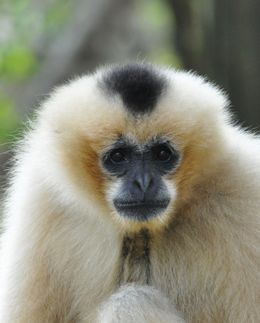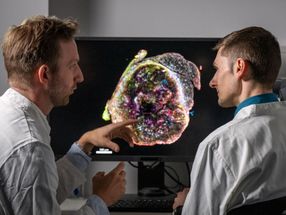Scientists resolve the evolution of insects
A collaboration of more than 100 researchers from 10 countries announce the results of an unprecedented scientific study that resolves the history of the evolution of insects. The results are published in Science, the world’s leading peer-reviewed research journal, and include answers to many long held questions about the evolutionary history of the world’s largest and most diverse group of organisms.

Gold Wasp (Hedychrum nobile)
Dr. Oliver Niehuis, ZFMK, Bonn
The results, published by scientists from the 1KITE project (1,000 Insect Transcriptome Evolution), are essential to understanding the millions of living insect species that shape our terrestrial living space and both support and threaten our natural resources.
“Insects are the most species rich organisms on earth. They are of immense ecological, economic and medical importance and affect our daily lives, from pollinating our crops to vectoring diseases,” says Dr. Bernhard Misof, Professor from Research Museum Alexander Koenig - Leibniz Institute for Animal Biodiversity (ZFMK) in Bonn, Germany, one of those who led the research effort. “We can only start to understand the enormous species richness and ecological importance of insects with a reliable reconstruction of how they are related.”
Using a dataset consisting of 144 carefully chosen species, 1KITE scientists present reliable estimates on the dates of origin and relationships of all major insect groups based on the enormous molecular dataset they collected. They show that insects originated at the same time as the earliest terrestrial plants about 480 million years ago. Their analyses therefore suggest that insects and plants shaped the earliest terrestrial ecosystems together, with insects developing wings to fly 400 million years ago, long before any other animal could do so, and at nearly the same time that land plants first grew substantially upwards to form forests.
“Phylogeny forms the foundation for telling us the who?, what?, when?, and why? of life,” says Dr. Karl Kjer, (Rutgers - State University of New Jersey, USA). “Many previously intractable questions are now resolved, while many of the “revolutions” brought about by previous analyses of smaller molecular datasets have contained errors that are now being corrected”.
The new reconstruction of the insect tree of life was only possible by a cooperation of more than 100 experts in molecular biology, insect morphology, paleontology, insect taxonomy, evolution, embryology bioinformatics and scientific computing. The consortium was led by Prof. Dr. Karl Kjer (Rutgers - State University of New Jersey, USA), Dr. Xin Zhou (Deputy Director of the China National GeneBank, BGI-Shenzhen), and Prof. Dr. Bernhard Misof from the ZFMK.
“We wanted to promote research on the little-studied genetic diversity of insects,” says Dr. Xin Zhou, Deputy Director of the China National GeneBank, BGI-Shenzhen in China, who initiated the project. “For applied research, it will become possible to comparatively analyze metabolic pathways of different insects and use this information to more specifically target pest species or insects that affect our resources. The genomic data we studied (the transcriptome – all of the expressed genes) gives us a very detailed and precise view into the genetic constitution and evolution of the species studied.”
However, the goal to analyze more than 1,000 insect transcriptomes, a set of all RNA molecules, posed a major challenge to the bioinformatics and scientific computing team within 1KITE. “During the planning phase of the project it became clear that the available software would not be able to handle the enormous amount of data,” relates Prof. Dr. Alexandros Stamatakis, head of the research group „Scientific Computing“ at the Heidelberg Institute for Theoretical Studies (HITS) and Professor for High Performance Computing at the life sciences of the Karlsruhe Institute for Technology (KIT). “The development of novel software and algorithms to handle “big data” such as these, is another notable accomplishment of the 1KITE team, and lays a theoretical foundation for future analyses of other very large phylogenomic data sets.”
The 1KITE team’s diverse strengths and strong international cooperation, including museum repositories for vouchering of specimens, results, and meta data, is a blueprint for international excellence in research.



























































